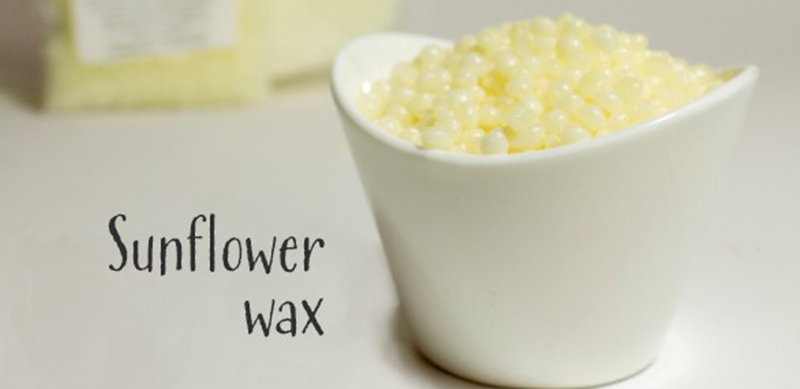Coloring Lip Products
Lip products are essentially a blend of oil and wax. To that, we add color.
The 3 kinds of color products used in lipstick includes: dyes, pigments and mica.
When you think "dyes", think "food dye", because it is essentially the same thing. The good thing about dyes is that they are very intense and they actually stain the lips, making the color last longer. The down side is that most dyes are chemically manufactured (aniline dyes). Folk who want to sell only a natural lip product tend to avoid dyes. There are a handful of natural dyes, however, which are popular in lip products. Foremost among these is Carmine, a lovely red which, while natural, is unfortunately not vegan as it is derived from insects.
An example of a natural lip product company which uses Carmine would be Burt's Bees.
Pigments (typically the Oxides) are another color additive used in lip products. When you think pigments, think "like paint". They are opaque, and while they may also stain the lips a little, mostly they "sit" on the surface of the lips to impart color. This is why pigments are best in lipsticks, and OK but not so great in lip balms, which tend to come off quickly. Dyes are better in the balms.
Most lip products are actually a blend of dyes and pigments, using both to get the best of both worlds. In addition, people will add Mica. Mica is an uncolored mineral which imparts shimmer. Often people will purchase a colored mica (for example: Bronze) and use that to color their lip products. Colored mica is really just mica blended with either pigments, dyes or both. In the case of Bronze, for example, it is mica with iron oxide pigment.
Finally, you can also use the metallic color additives. We offer a great red color called Crucible Red which is made from copper.
How much color do you use in your formula?
The general rule of thumb is that colorants are 10-20% of the formula by weight. This assumes that you are working with a dye which is predispersed in castor oil (such as our liquid lip colors) and/or pigments and micas in powder form.
Here are some sample formulae:
1) 2.5% of our Ruby Liquid Lip Color, 2.5% of our Rose Liquid Lip Color, 15% of our Australian Amber Mica (in powder) mixed with 80% by weight of our pre-made Lipstick Base.
2) 1-1/2 tsp. Dye (powder form) or Iron Oxides, 1/2 tsp. colored mica add to 3 tablespoons premade lipstick or lip balm base.
For more info, visit our site at www.wholesalecolors.com (or www.tkbtrading.com).
The 3 kinds of color products used in lipstick includes: dyes, pigments and mica.
When you think "dyes", think "food dye", because it is essentially the same thing. The good thing about dyes is that they are very intense and they actually stain the lips, making the color last longer. The down side is that most dyes are chemically manufactured (aniline dyes). Folk who want to sell only a natural lip product tend to avoid dyes. There are a handful of natural dyes, however, which are popular in lip products. Foremost among these is Carmine, a lovely red which, while natural, is unfortunately not vegan as it is derived from insects.
An example of a natural lip product company which uses Carmine would be Burt's Bees.
Pigments (typically the Oxides) are another color additive used in lip products. When you think pigments, think "like paint". They are opaque, and while they may also stain the lips a little, mostly they "sit" on the surface of the lips to impart color. This is why pigments are best in lipsticks, and OK but not so great in lip balms, which tend to come off quickly. Dyes are better in the balms.
Most lip products are actually a blend of dyes and pigments, using both to get the best of both worlds. In addition, people will add Mica. Mica is an uncolored mineral which imparts shimmer. Often people will purchase a colored mica (for example: Bronze) and use that to color their lip products. Colored mica is really just mica blended with either pigments, dyes or both. In the case of Bronze, for example, it is mica with iron oxide pigment.
Finally, you can also use the metallic color additives. We offer a great red color called Crucible Red which is made from copper.
How much color do you use in your formula?
The general rule of thumb is that colorants are 10-20% of the formula by weight. This assumes that you are working with a dye which is predispersed in castor oil (such as our liquid lip colors) and/or pigments and micas in powder form.
Here are some sample formulae:
1) 2.5% of our Ruby Liquid Lip Color, 2.5% of our Rose Liquid Lip Color, 15% of our Australian Amber Mica (in powder) mixed with 80% by weight of our pre-made Lipstick Base.
2) 1-1/2 tsp. Dye (powder form) or Iron Oxides, 1/2 tsp. colored mica add to 3 tablespoons premade lipstick or lip balm base.
For more info, visit our site at www.wholesalecolors.com (or www.tkbtrading.com).
